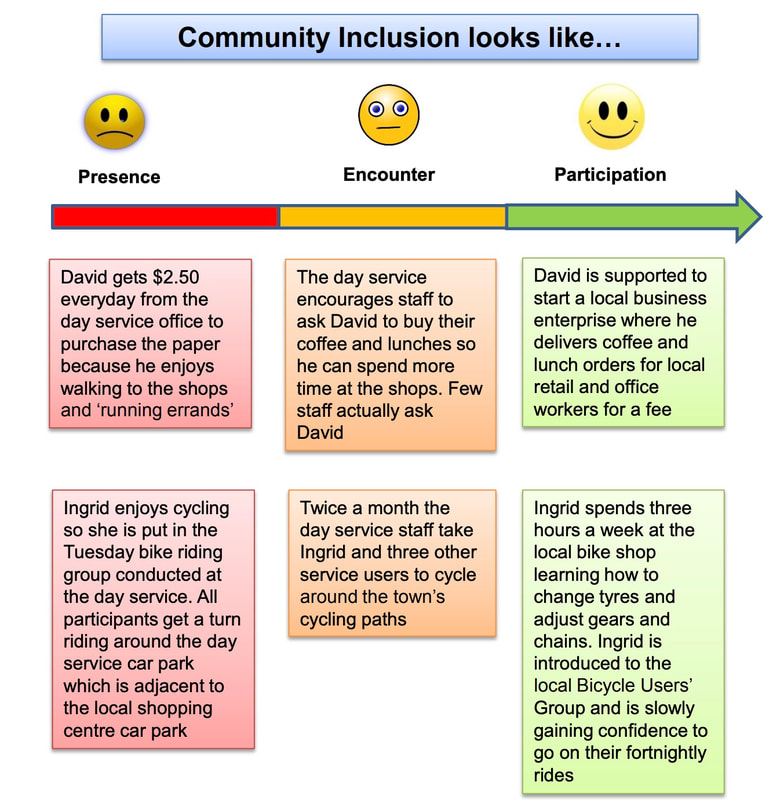disability inclusion
Some key things to think about:
1. Inclusion means that people of all abilities should be able to participate in society, including community activities, work, and education, and health care. Things like attitudes, policies, physical barriers, and lack of access ro programs can prevent the inclusion of people with disabilities.
2. Ableism is discrimination against people with disabilities.
3. Some people with disabilities like person-first language (such as "person with cerebral palsy"). Others like using identity-first language (such as "autistic person"). You should ask what someone prefers. Also, some organizations have recommendations for language for specific diagnoses, such as the National Down Syndrome Society.
4. When talking about or to people with disabilities, avoid using offensive or outdated language. RespectAbility has some good tips on interacting with people with disabilities. So does the Centers for Disease Control.
5. Sometimes you will see the term "special needs" used. This term came about as a way to describe children who need assistance to help with a range of disabilities (learning, physical, emotional). Some prefer the term "special needs" over "disabilities". But there has been a movement to end the use of this term and to use "disabilities".
1. Inclusion means that people of all abilities should be able to participate in society, including community activities, work, and education, and health care. Things like attitudes, policies, physical barriers, and lack of access ro programs can prevent the inclusion of people with disabilities.
2. Ableism is discrimination against people with disabilities.
3. Some people with disabilities like person-first language (such as "person with cerebral palsy"). Others like using identity-first language (such as "autistic person"). You should ask what someone prefers. Also, some organizations have recommendations for language for specific diagnoses, such as the National Down Syndrome Society.
4. When talking about or to people with disabilities, avoid using offensive or outdated language. RespectAbility has some good tips on interacting with people with disabilities. So does the Centers for Disease Control.
5. Sometimes you will see the term "special needs" used. This term came about as a way to describe children who need assistance to help with a range of disabilities (learning, physical, emotional). Some prefer the term "special needs" over "disabilities". But there has been a movement to end the use of this term and to use "disabilities".
|
|
|

This graphic from the National Disability Services of Australia shows how there are different levels of inclusion.
|
|
|
